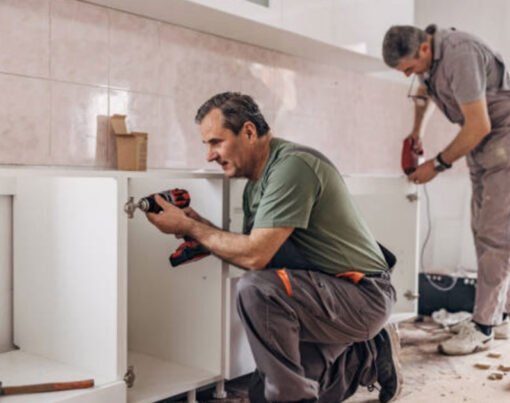As temperatures rise, it’s crucial to prepare your home for the sweltering heat. Taking proactive measures can help keep your living space comfortable and your energy bills manageable. This includes following the essential steps to ensure your home is ready to handle the heat. Effective preparation can prevent heat-related damage to your home. Additionally, it can enhance your overall quality of life during the hottest months of the year.
Here are some ways to prepare your home for hot weather.
Table of Contents
Insulate and Seal Your Home
Proper insulation and sealing are important to keep cool air inside and hot air outside. Start by checking your home’s insulation levels, particularly in the attic and walls. Insulating these areas can significantly reduce heat transfer, keeping your home cooler. Furthermore, inspect windows and doors for any gaps or cracks where cold air might escape. Use weatherstripping or caulking to seal these areas effectively. This simple step can make a substantial difference in maintaining a comfortable indoor temperature.
Optimize Your Air Conditioning System
Your air conditioning system plays a pivotal role in keeping your home cool during hot weather. Ensure your AC unit is functioning efficiently by scheduling regular maintenance. Clean or replace air filters every one to three months to ensure optimal airflow. Moreover, check for any leaks in the ductwork and seal them to prevent cool air from escaping. Consider upgrading to a programmable thermostat to regulate temperatures more precisely, ultimately reducing energy consumption and lowering utility bills.
Utilize Fans and Ventilation
Fans and ventilation systems can complement your air conditioning, making your home more comfortable. Ceiling fans are particularly effective in circulating air and creating a wind-chill effect. Ensure fans are set to rotate counterclockwise during the summer to push cool air down. In addition to ceiling fans, consider using exhaust fans in the kitchen and bathrooms to expel hot air. Proper ventilation helps remove excess heat and humidity, improving overall indoor comfort.
Manage Sunlight and Heat Gain
One of the most effective ways to keep your home cool is by managing sunlight and heat gain. Install reflective window films or solar screens to reduce the amount of heat entering through windows. Close blinds or curtains during the hottest parts of the day to block direct sunlight. For an added layer of protection, consider planting trees or installing awnings outside windows to provide shade. These measures can significantly reduce indoor temperatures and decrease the load on your cooling system.
Maintain Your Pool
If you have a pool, it’s essential to keep it well-maintained during hot weather. Regularly check for any issues, such as a pool leak, which can lead to water loss and increased maintenance costs. Pool leak detection should be a part of your routine maintenance to ensure your pool remains a refreshing escape from the heat. Additionally, keep your pool clean and balance the chemicals to prevent algae growth and maintain water quality. Regularly skimming the surface and cleaning the filters can also help maintain a pristine pool environment.
Optimize Your Home’s Landscaping
Strategic landscaping can also help keep your home cool. Planting trees and shrubs around your home can provide natural shade, reducing the amount of heat that reaches your house. Opt for native plants that require less water and maintenance. You should also consider using ground cover plants to cool the surrounding area. Mulching garden beds can also help retain soil moisture and keep the temperature down. A well-designed landscape not only enhances the aesthetic appeal of your home but also contributes to a cooler indoor environment.
Reduce Indoor Heat Sources
Minimize the use of heat-generating appliances during the hottest parts of the day. Opt for grilling or microwaving instead of using the oven or stovetop. Switch to energy-efficient LED bulbs, which produce less heat compared to traditional incandescent bulbs. Furthermore, unplug electronics and appliances when not in use, as they can generate heat even in standby mode. These small changes can collectively reduce indoor heat and contribute to a more comfortable living space.
Stay Hydrated and Safe
While preparing your home for hot weather is crucial, it’s equally important to take care of yourself and your family. Stay hydrated by drinking plenty of water throughout the day. Avoid strenuous activities during peak heat hours and take breaks in a cool environment when needed. Wear lightweight, breathable clothing, and use fans or air conditioning to stay cool. Keeping an eye on the weather forecast and being aware of heat advisories can help you plan your activities accordingly.
Conclusion: Stay Cool and Comfortable
Preparing your home for hot weather involves a combination of practical measures and routine maintenance. By insulating and sealing your home, optimizing your air conditioning system, utilizing fans and ventilation, managing sunlight and heat gain, maintaining your pool, optimizing landscaping, reducing indoor heat sources, and staying hydrated, you can create the ideal living environment.










